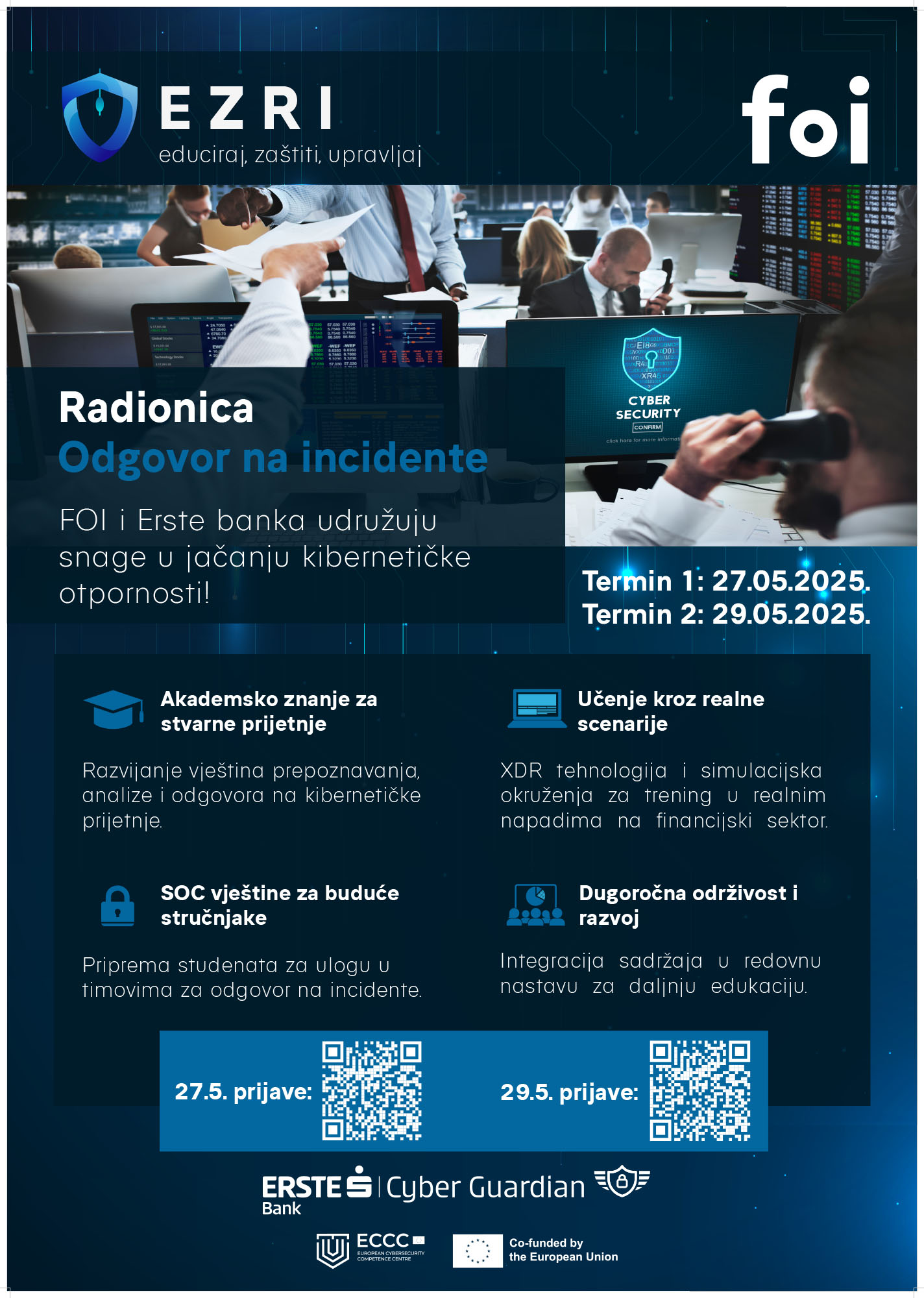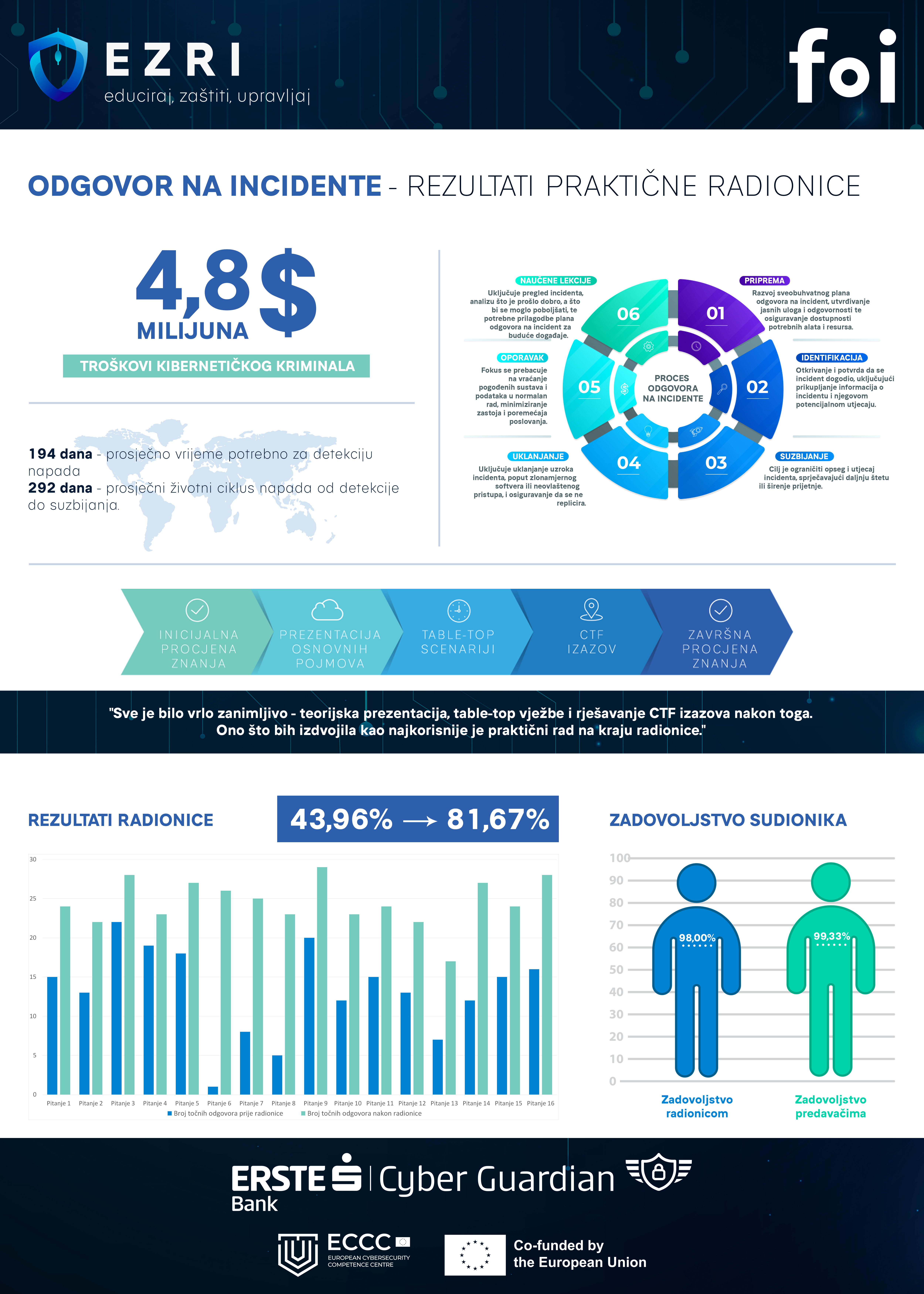Project Description
Our institution recognizes the growing need to strengthen cybersecurity awareness and knowledge among students and staff. Current cybersecurity awareness varies depending on their expertise and previous experience. While information science students have a basic understanding of security concepts, many are unfamiliar with concepts such as security hygiene, threat response, or basic personal data protection practices. Given the rapid development of digital technologies, the daily use of Internet resources, and the growing number of real threats and incidents, the need to raise awareness of threats and ways to protect from them is necessary. Within the broader educational plan of the institution, the project represents an opportunity for a structured introduction of cybersecurity elements through specialized modules and practical activities that go beyond the core curriculum. This project enables the systematic inclusion of security exercises, threat simulations, and incident response methodologies, thus offering students of all majors access to current knowledge and techniques for defending against cyber threats. In this way, we develop basic security skills and a culture of security among all participants, which contributes to a more comprehensive understanding of security protocols and prepares them for the challenges of professional environments.
Additionally, it has been observed that a large number of students do not sufficiently understand how cybersecurity affects their daily online activities, as well as their future work in various sectors. This project will enable the deepening of knowledge and skills through workshops, lectures and practical exercises, and also includes an opportunity for staff who, through participation in workshops and trainings, will be able to gain insight into the application of security practices in their daily work. This will ultimately lead to wider awareness and application of security practices within the educational community.

Project Goals
The goal of the project is to develop and advance knowledge about cyber security, security hygiene and incident response techniques throughna workshop for students. The project includes the acquisition and implementation of an advanced XDR (Extended Detection and Response) solution, which includes integrated components for simulating and analyzing security threats, such as the CTF (Capture the Flag) platform for incident response, where students can apply the learned concepts through interactive challenges in a safe, controlled environment and a workshop.
Additional project objectives
- Increase the level of knowledge of basic security practices and security hygiene among students, through theoretical modules that include the basics of data protection, threat recognition and security hygiene.
- Raise awareness of the importance of cybersecurity and incident response, through the integration of theoretical and practical components, ensuring a deeper understanding of the specific steps within the incident response process.
- Long-term strengthening of the educational institution's capacity for the continuous implementation of these programs, with the possibility of introducing ECTS credits for participation in training.

Workshop Steps
Initial Assessment
Defining Basic Terms
Table-top Exercises
CTF Challenge
Final Assessment
Project Results
The project contributes to the creation of an informed and more resilient community of Erste Bank Users and other stakeholders in the banking market. Through educating students and the general public about the basic principles of cyber security and responses to incidents, the project builds understanding and awareness of the processes that take place during and after an attack. For example, in the case of a cyberattack, informed users will be more prepared to understand the complexity of the situation, including all the steps the organisation is taking to minimize the damage and return to normal. This awareness can reduce backlash and help maintain user confidence, as they will be aware of procedures and response mechanisms that include threat assessment, customer communication, and continuous system monitoring. In addition, users will recognize the organisation's efforts to transparently report and inform about security measures, which contributes to the long-term reputation and credibility of an organisation as a responsible institution that creates a safe environment for its clients.
Additionally, education that increases general awareness of cyber threats can reduce the risk to organisations in the long term, as future clients, employees and associates will better understand how they can contribute to security. This proactive approach, in which Erste Bank contributes to the development of a general understanding of cybersecurity through educational projects, can result in a reduction in the frequency of attacks and the burden on banking resources, thereby ensuring a more stable and secure business environment.
The project directly contributes to the National Cybersecurity Strategy and the objectives of the Digital Europe program and the European Union's Cybersecurity Strategy by creating an educational platform that increases awareness of threats and strengthens resilience to cyber attacks. Through workshops, lectures and simulations, the project will improve students' understanding of the importance of cyber hygiene and effective response to threats. By educating new generations who are trained to recognize and respond to cyber risks, the project empowers the wider community, supporting the European strategy that advocates for a safer digital environment. The project also supports Digital Europe by increasing capacities to protect the digital market and by integrating innovative cybersecurity approaches into educational programs, thus contributing to the strategic goal of creating a more resilient digital Europe in the coming decade.
Key Performance Indicators
- CTF scenario
- Integrated tests and exercises with different difficulty levels
- Tabletop scenarios covering different aspects of incident response
- Hosts configured to use an XDR solution
- Two workshops with up to 15 students per workshop
- Increased accuracy of participants responses after training
- Evaluation survey on participant satisfaction after workshops
- Digital infographic with workshop results
- Promotional articles
- Dissemination materials (flyers and posters)

Project Team Members

Assoc. Prof. Igor Tomičić, PhD
Project Manager
Assoc. Prof. Petra Grd, PhD
Team Member